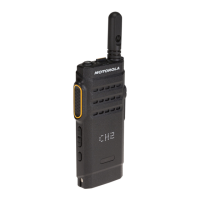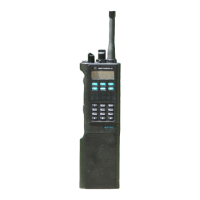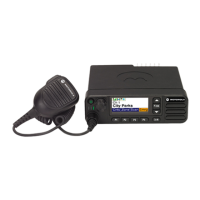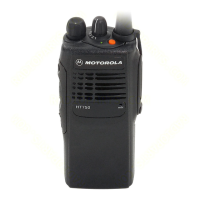2.12.2
Packet Data IP Addressing
Table 6: Packet Data IP Addressing
Addressing
Mode
Description
Wide IP Address An IP address may be assigned to the terminal by the SwMI during the Packet
Data (PD) context activation. When assigned, both Terminal Equipment and
Mobile Terminal applications use this address as the source address in IP
packets delivered to the infrastructure.
Local IP Address By default both Terminal Equipment and the radio have their own IP address-
es. Terminal Equipment and Mobile Terminal use these addresses for local
datagram transmissions between Terminal Equipment and Mobile Terminal
only and are not passed to the SwMI.
Static or Dynamic
IP Address As-
signment
The terminals support static and dynamic IP address assignment. The dynam-
ic support is requested in the following situations:
• Request a Dynamic IP Address is set to Dynamic and the PD Applica-
tion Type is the radio internal PD application.
• Request a Dynamic IP Address is set to Dynamic and the PD Applica-
tion Type is a PEI PD application requesting dynamic IP address.
2.12.3
Packet Data User Authentication
The Packet Data (PD) user authentication is a method of authenticating the Terminal Equipment user
before allowing the packet data link activation.
A PD Authentication server connected to the SwMI authenticates the Terminal Equipment user. The
terminal only sends the messages between the Terminal Equipment and the SwMI. In the wide mode,
the terminal offers Point-to-Point Protocol (PPP) user authentication between Mobile Terminal and
Terminal Equipment using Password Authentication Protocol (PAP) or Challenge Handshake
Authentication Protocol (CHAP), before the IP link is established. The terminal always attempts to
negotiate usage of the CHAP method. However, the radio agrees to use PAP, when the Terminal
Equipment application insists. If the terminal does not require PD user authentication, it operates
without any user authentication. However, if the terminal requires the PD user authentication, it rejects
the Packet Data Protocol (PDP) context activation.
NOTICE:
If the SwMI does not agree for the authentication method, for example PAP, the SwMI
can reject it.
2.13
TETRA Network Protocol 1
TETRA Network Protocol type 1 (TNP1) is a bridge protocol based on the TETRA layer 3 over the air
protocol. The TNP1 supports all TETRA dispatch functionality.
In the Trunked Mode Operation (TMO), the TNP1 specifies a protocol for use over the PEI, that allows
Terminal Equipment (TE) to have control over the TETRA services: mobility management, call control,
short data service, and supplementary services: send GNSS reports, software information, and battery
state information. In addition, commands to access the radio configuration and storage parameters are
available.
The radio supports TETRA standard packet data using the IP network layer protocol.
MN002955A01-AA
Chapter 2: Services and Features
38 Send Feedback
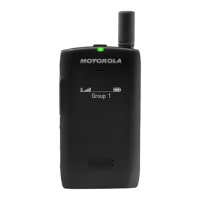
